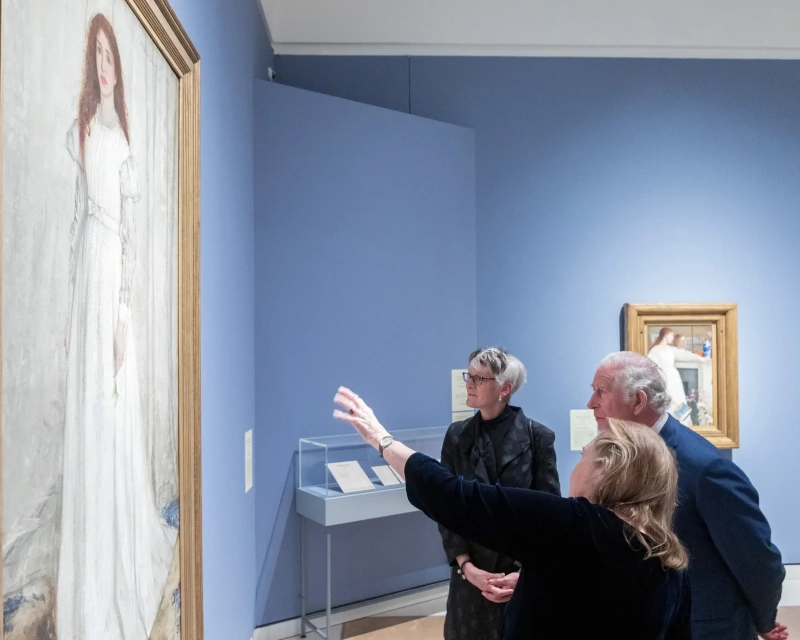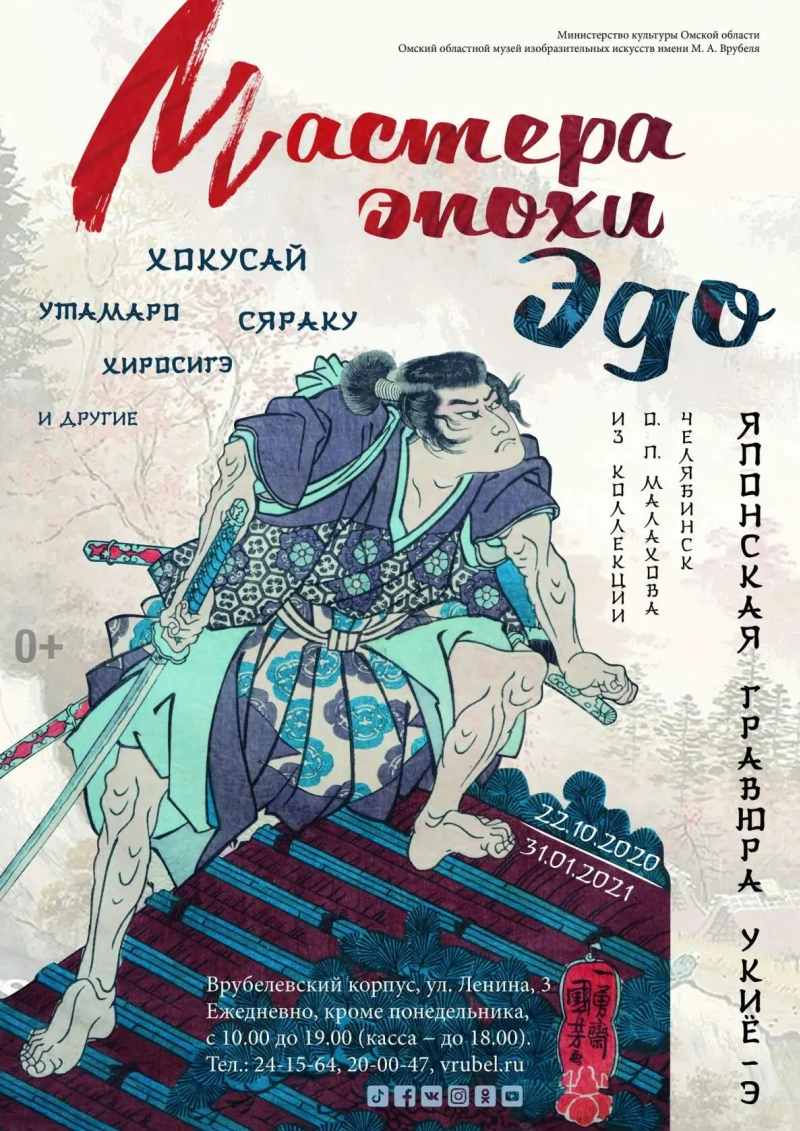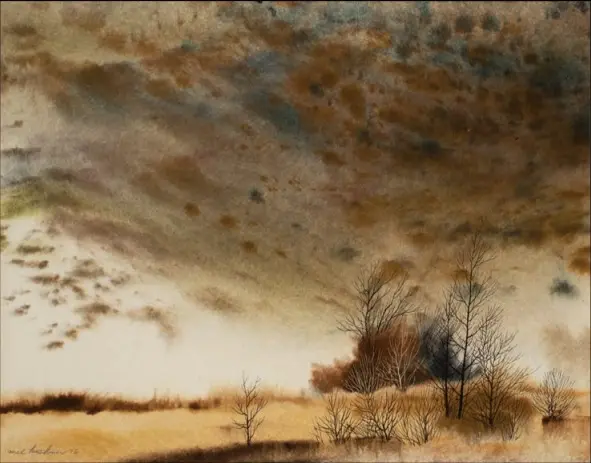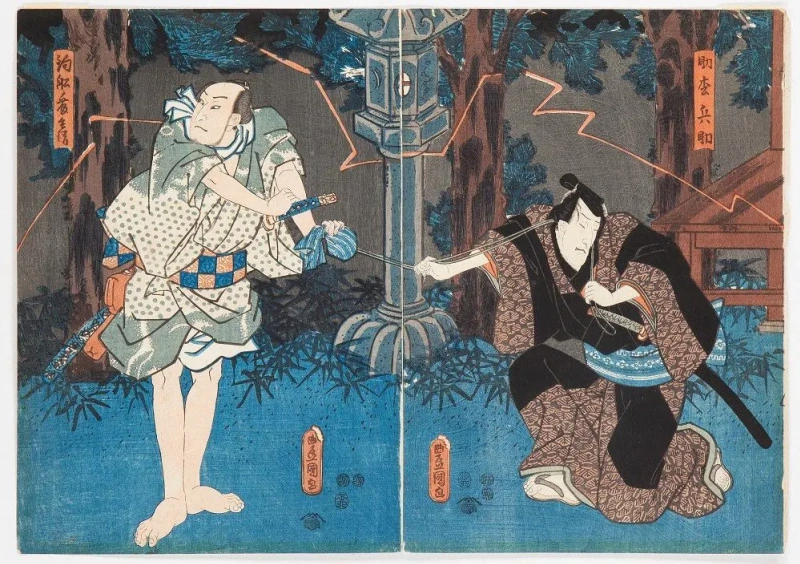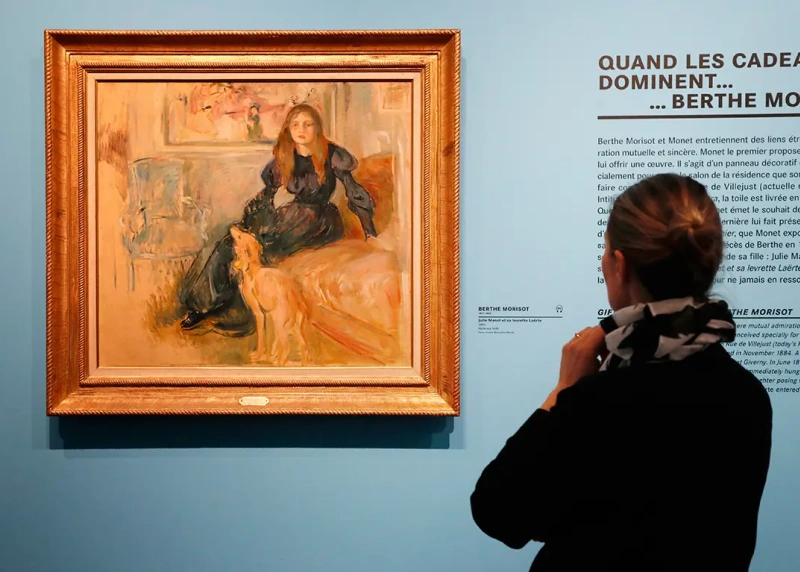log in
Enter site
Login to use Arthive functionality to the maximum
Utagawa (sometimes - Ando) Hiroshige (1797, Edo (now Tokyo) - October 12, 1858, ibid) - Japanese artist, master of color woodcuts. According to some researchers, the last great creator of Ukiyo-e, whose death resulted in a slow extinction of direction. He gained wide popularity in his homeland and far beyond its borders due to the cycles of engravings "36 views of Mount Fuji", "53 Tokaido stations" and especially - "100 famous types of Edo". Sheets from the last series of Vincent Van Gogh not only decorated the walls of his studio, but also redrew them, studying the techniques of Japanese engraving (1, 2).
Features of the artist Utagawa Hiroshige: although Katsushika Hokusai was the first to widely use landscape themes in ukiyo-e prints, Hiroshige managed to fill his landscapes with a special emotional mood, due to which they are sometimes called "Portraits of the area". In turn, he also introduced to Ukiyo-e a topic that was alien to this direction: the image of fish, birds and flowers (earlier on xylographs it was customary to depict Japanese beauties and actors of the Kabuki theater).
Famous engravings of Utagawa Hiroshige: "Blooming plum orchard in Kameido", “Sudden rainstorm over the Okhashi Bridge in Atake”, "Irises in Horikiri", "Sparrows and snowy camellia", “Saruvaka quarter at night”.
The future master of woodcuts was born in the family of a hereditary samurai. Although at the time of the birth of Tokutaro (as the artist called him at birth) his father was in charge of the fire brigade of Edo. Subsequently, the boy's name will change again and again: by tradition, in Japan, children were often renamed to confuse evil spirits. So, before becoming a famous artist Utagawa Hiroshige, he will have some time to be Tokubey, Juyamon and Jubei.
The death of the Tokutaro family came very early. At first she came for one of three sisters. When he was 12, his mother was gone, his father died within a year. According to custom, regardless of his young age, the boy inherited the profession of the head of the family. So the teenager began to monitor the prevention of fires in Edo Castle. Fortunately, these responsibilities left enough free time for the lesson, which was much more to his liking - drawing. His first work Tokutaro created at the age of 10 years.
He dreamed of learning from Toyokuni, the famous master of the school Utagawa. But, by a lucky coincidence, he already had too many students, and there was simply no room for one more. Good luck, researchers will call it after many years, because Toyokuni was considered an authoritarian teacher who most likely would not have allowed Hiroshige's talent to fully manifest itself.
But another teacher of the same school allowed, Toyohiro. This can be judged by the fact that already at the age of 15 a student was allowed to sign his works (in Japan, some artists went to this for decades). So the pseudonym Hiroshige appeared: according to the accepted custom, one of the hieroglyphs that make it up is taken from the name of the teacher.
As in many other cases, in the process of learning the skill of the artist, the Japanese did not like fuss. Different techniques and styles were studied for many years, and very often the artists reached their heyday at a very old age (as happened with Hokusai on reaching the 60th anniversary).
But Hiroshige comprehended the art of engraving by ukiyo-e external, and by the age of 25 he confidently held a brush in his hand. No matter how funny it sounded, but he left his post as a fireman only in 1823. Some five years later, his authority in the arts was already so high that the master was offered to head the school of his mentor after his death.
Hiroshige refused - apparently, a talented young man had more ambitious plans for life than learning the art of engraving of yellow-headed chicks. And he began to pave the way for glory along the path that Master Hokusai began to tread on him - on a field of color xylographics that nobody plowed before them.
On artistic Olympus (if this ancient Greek metaphor is applicable to Japanese art) Hiroshige, one might say, rode on a white horse. Which, according to tradition, each year presented to the emperor as a gift from the military government. A solemn procession with a horse made its way from Edo to the city of Kyoto along the Tokaido road. The artist accompanied the procession in 1832, producing sketches at each of the stops.
So the series “53 Tokaido stations” was born, making so much noise that the first edition disappeared from the counters in a few weeks. The reprint of the cycle in the form of an album made Hiroshige famous throughout the capital.
Mental instability only intensified after the death of his son Chujiro. Apparently, in an attempt to escape from the tragic events and related experiences, the artist travels around the country for a long time, not stopping anywhere for long, and only after ten years of wandering returns to his home.
When in 1849 the mortal world leaves Hokusai, the place of the main landscape painter of Japan becomes free, and Hiroshige immediately takes it. Many assistants work in his workshop, and the teacher’s career still catches up with the artist. Although he still does not favor this occupation, because he preferred a solitary lifestyle and silence. That, however, did not prevent him from teaching the subtleties of creating ukiyo-e prints a total of more than twenty masters.
Apparently, such a number of losses of people close to him still could not help but leave an imprint on the artist's psyche. Perhaps he even had a disorder that today would be called depression. Hiroshige began to express a desire to engage with creativity, because he was afraid that "Years and weariness will disgrace his former glory".
Eventually he becomes a Buddhist monk, but continues to live in the world. This decision could not be called an unexpected one, since the novice master mastered another ten years before the tonsure. To the greatest luck for the entire artistic world, Hiroshige did not find the strength to finally break with art, despite the spiritual vows taken. After all, it is at this time that he creates the most valuable of his creations - the series "One Hundred Famous Views of Edo" (1856-1858).
And only after that, as if completing his mission on earth, Hiroshige goes on a last date with the one that took away almost everyone he loved. The artist lived very little by Japanese standards - only 61 years. But during this period he managed to create almost five and a half thousand works, many of which are brilliant examples of the master's subtle, lyrical, delicate and philosophical view of the world.
The author: Natalia Azarenko
继续阅读
Features of the artist Utagawa Hiroshige: although Katsushika Hokusai was the first to widely use landscape themes in ukiyo-e prints, Hiroshige managed to fill his landscapes with a special emotional mood, due to which they are sometimes called "Portraits of the area". In turn, he also introduced to Ukiyo-e a topic that was alien to this direction: the image of fish, birds and flowers (earlier on xylographs it was customary to depict Japanese beauties and actors of the Kabuki theater).
Famous engravings of Utagawa Hiroshige: "Blooming plum orchard in Kameido", “Sudden rainstorm over the Okhashi Bridge in Atake”, "Irises in Horikiri", "Sparrows and snowy camellia", “Saruvaka quarter at night”.
Failed fireman
The future master of woodcuts was born in the family of a hereditary samurai. Although at the time of the birth of Tokutaro (as the artist called him at birth) his father was in charge of the fire brigade of Edo. Subsequently, the boy's name will change again and again: by tradition, in Japan, children were often renamed to confuse evil spirits. So, before becoming a famous artist Utagawa Hiroshige, he will have some time to be Tokubey, Juyamon and Jubei.
The death of the Tokutaro family came very early. At first she came for one of three sisters. When he was 12, his mother was gone, his father died within a year. According to custom, regardless of his young age, the boy inherited the profession of the head of the family. So the teenager began to monitor the prevention of fires in Edo Castle. Fortunately, these responsibilities left enough free time for the lesson, which was much more to his liking - drawing. His first work Tokutaro created at the age of 10 years.
He dreamed of learning from Toyokuni, the famous master of the school Utagawa. But, by a lucky coincidence, he already had too many students, and there was simply no room for one more. Good luck, researchers will call it after many years, because Toyokuni was considered an authoritarian teacher who most likely would not have allowed Hiroshige's talent to fully manifest itself.
But another teacher of the same school allowed, Toyohiro. This can be judged by the fact that already at the age of 15 a student was allowed to sign his works (in Japan, some artists went to this for decades). So the pseudonym Hiroshige appeared: according to the accepted custom, one of the hieroglyphs that make it up is taken from the name of the teacher.
53 stations to success
As in many other cases, in the process of learning the skill of the artist, the Japanese did not like fuss. Different techniques and styles were studied for many years, and very often the artists reached their heyday at a very old age (as happened with Hokusai on reaching the 60th anniversary).
But Hiroshige comprehended the art of engraving by ukiyo-e external, and by the age of 25 he confidently held a brush in his hand. No matter how funny it sounded, but he left his post as a fireman only in 1823. Some five years later, his authority in the arts was already so high that the master was offered to head the school of his mentor after his death.
Hiroshige refused - apparently, a talented young man had more ambitious plans for life than learning the art of engraving of yellow-headed chicks. And he began to pave the way for glory along the path that Master Hokusai began to tread on him - on a field of color xylographics that nobody plowed before them.
On artistic Olympus (if this ancient Greek metaphor is applicable to Japanese art) Hiroshige, one might say, rode on a white horse. Which, according to tradition, each year presented to the emperor as a gift from the military government. A solemn procession with a horse made its way from Edo to the city of Kyoto along the Tokaido road. The artist accompanied the procession in 1832, producing sketches at each of the stops.
So the series “53 Tokaido stations” was born, making so much noise that the first edition disappeared from the counters in a few weeks. The reprint of the cycle in the form of an album made Hiroshige famous throughout the capital.
From teachers to novices
At the peak of his career, the artist is confronted with personal misfortunes, death begins to regularly come to his life again. At first she paid a visit in 1839, taking with her first spouse Hiroshige. He married a second time, but according to some surviving documents, he was harassed by heightened anxiety.Mental instability only intensified after the death of his son Chujiro. Apparently, in an attempt to escape from the tragic events and related experiences, the artist travels around the country for a long time, not stopping anywhere for long, and only after ten years of wandering returns to his home.
When in 1849 the mortal world leaves Hokusai, the place of the main landscape painter of Japan becomes free, and Hiroshige immediately takes it. Many assistants work in his workshop, and the teacher’s career still catches up with the artist. Although he still does not favor this occupation, because he preferred a solitary lifestyle and silence. That, however, did not prevent him from teaching the subtleties of creating ukiyo-e prints a total of more than twenty masters.
Apparently, such a number of losses of people close to him still could not help but leave an imprint on the artist's psyche. Perhaps he even had a disorder that today would be called depression. Hiroshige began to express a desire to engage with creativity, because he was afraid that "Years and weariness will disgrace his former glory".
Eventually he becomes a Buddhist monk, but continues to live in the world. This decision could not be called an unexpected one, since the novice master mastered another ten years before the tonsure. To the greatest luck for the entire artistic world, Hiroshige did not find the strength to finally break with art, despite the spiritual vows taken. After all, it is at this time that he creates the most valuable of his creations - the series "One Hundred Famous Views of Edo" (1856-1858).
And only after that, as if completing his mission on earth, Hiroshige goes on a last date with the one that took away almost everyone he loved. The artist lived very little by Japanese standards - only 61 years. But during this period he managed to create almost five and a half thousand works, many of which are brilliant examples of the master's subtle, lyrical, delicate and philosophical view of the world.
The author: Natalia Azarenko
-
喜欢了作品368 users
- Artworks in 3 collections and 324 selections
出版物
展览
画家的所有展览
鸟和樱花
1860

大津站
1840, 22×34 厘米

Kasumigaseki. The series "100 famous views of Edo"
1857, 35.7×24.5 厘米

Street in the district City. The series "100 famous views of Edo"
1856, 35.7×24.5 厘米
消息
Under a Cherry Blossom. Japanese engravingsexhibition finished

6 十月 2022 − 15 一月 2023 Sinebrychov艺术画廊,赫尔辛基, Helsinki, Bulevardi 40
Exhibition
Under a Cherry Blossom. Japanese engravingsstarted

6 十月 2022 − 15 一月 2023 Sinebrychov艺术画廊,赫尔辛基, Helsinki, Bulevardi 40




